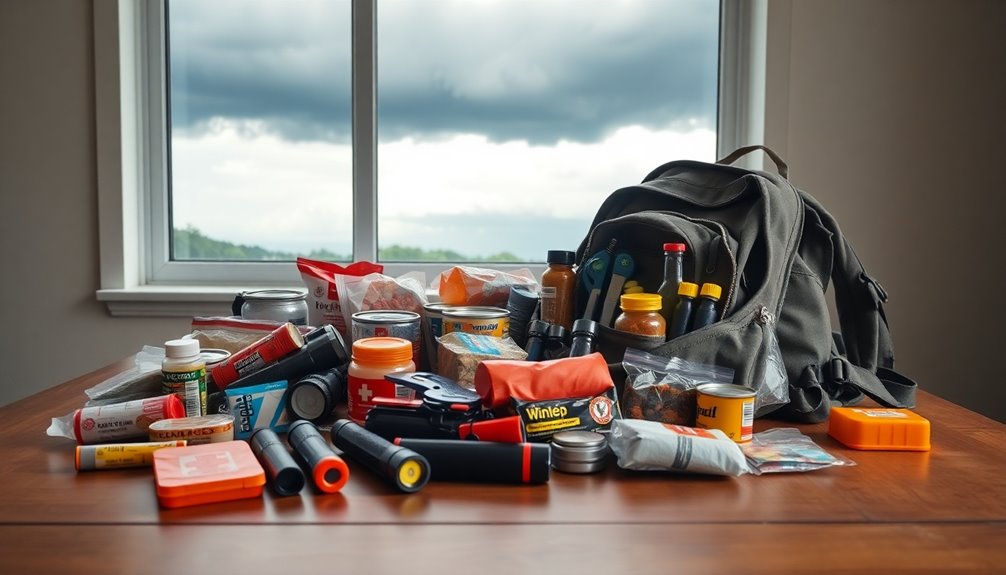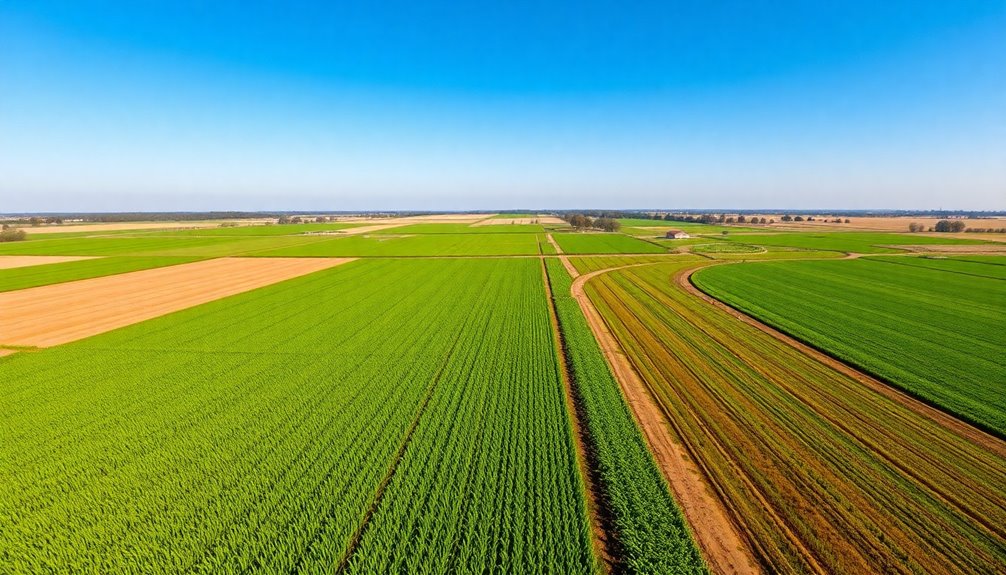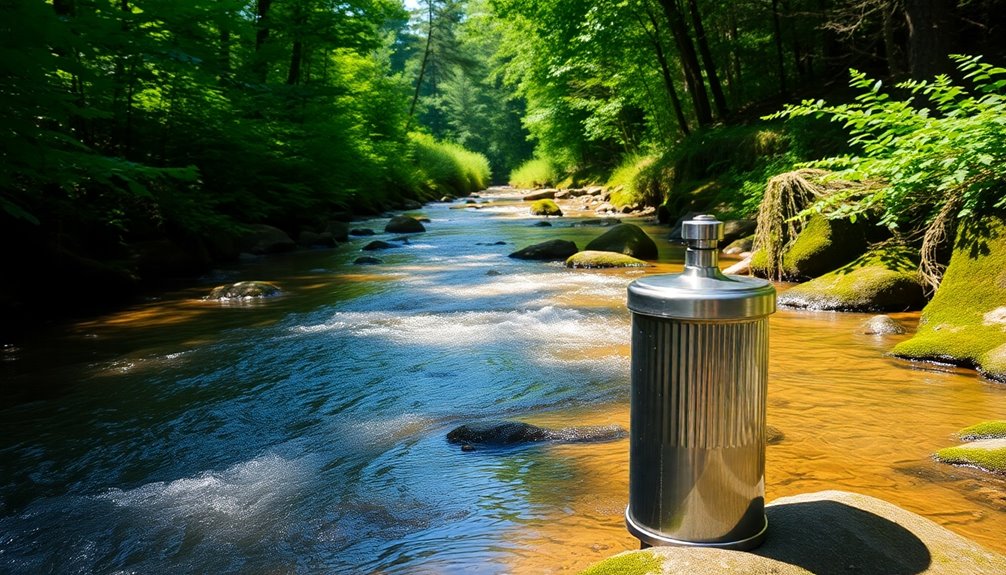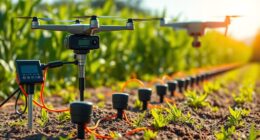To be ready for any crisis, start by creating a comprehensive emergency plan tailored to your needs and local risks. Assemble a 72-Hour Kit with non-perishable food, water, and a first aid kit. Make sure everyone knows communication methods and designated meeting places. Practice your plan regularly so everyone understands their roles. Stay informed about local hazards, and update your supplies every six months. Engage with your community to share resources and strategies. By taking these proactive steps, you'll enhance your safety and resilience in emergencies. Continue exploring to discover additional strategies and resources for effective preparedness.
Key Takeaways
- Assemble a comprehensive emergency kit with a three-day supply of food, water, and essential supplies like first aid and medication.
- Create a disaster plan that includes communication methods, meeting locations, and evacuation routes tailored to your family's needs.
- Conduct regular drills to familiarize all family members with emergency procedures and ensure everyone knows their roles during a crisis.
- Stay informed about local hazards and develop strategies to mitigate their impact, enhancing community resilience and self-sufficiency.
- Engage with community resources, such as workshops and training sessions, to build skills and share knowledge for better preparedness.
Introduction
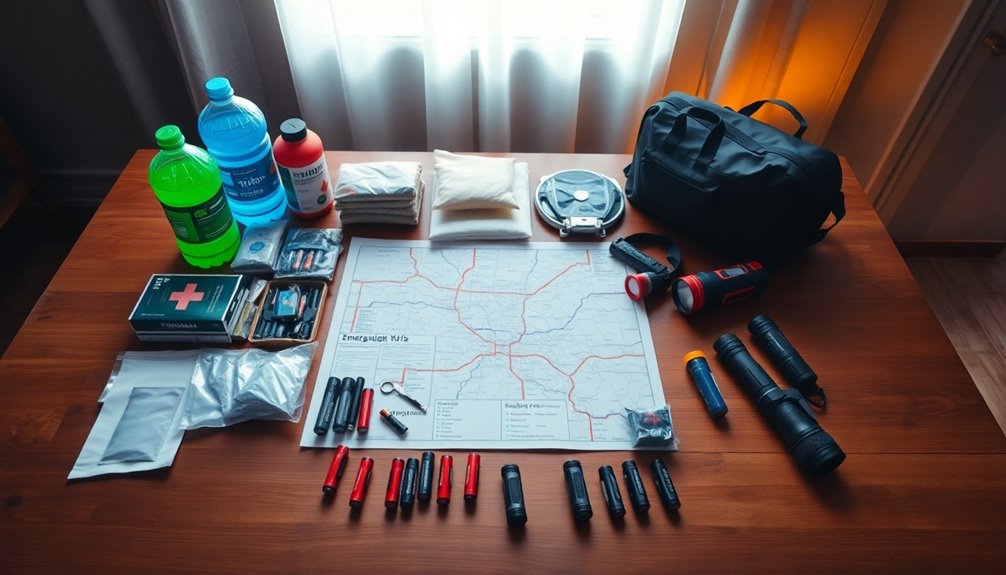
When emergencies strike, having an emergency kit ready can make all the difference for you and your family.
Knowing what essentials to include and preparing your loved ones for potential crises ensures everyone stays safe and calm.
Let's explore how to create an effective emergency kit and enhance your family's readiness.
Emergency Kit Essentials Highlighted
An essential emergency kit can make all the difference in a crisis, ensuring you're prepared for unexpected situations.
Start with a three-day supply of non-perishable food and at least one gallon of water per person per day for hydration and sanitation needs.
Your First Aid kit should include bandages, antiseptic wipes, prescription medications, and a first aid manual, which you should check regularly.
Don't forget climate-appropriate clothing, sturdy shoes, and warm blankets stored in waterproof bags.
Equip yourself with tools like a multi-tool, flashlight with extra batteries, a whistle for signaling, duct tape, and a portable charger.
Lastly, consider special items for unique needs, ensuring comprehensive Emergency Preparedness for common emergencies.
Emergency Readiness for Families
Emergency readiness for families is crucial for navigating unexpected crises. Every year, emergencies can occur in your area, so having a solid plan in place is essential.
Start by creating a disaster plan that outlines communication methods, meeting locations, and evacuation routes. As part of being Red Cross Ready, assemble a 72-Hour Kit containing food, water, and first aid supplies to sustain your family for at least three days without external help.
It's also important to address children's anxieties by providing age-appropriate information to help them cope. Regularly practice your disaster plans to enhance preparedness, ensuring everyone knows their roles and feels confident in response efforts.
Lastly, maintain an updated inventory of emergency supplies to ensure accessibility for all family members. Additionally, consider the importance of community resilience in strengthening your family's preparedness efforts.
Crisis Preparedness Defined
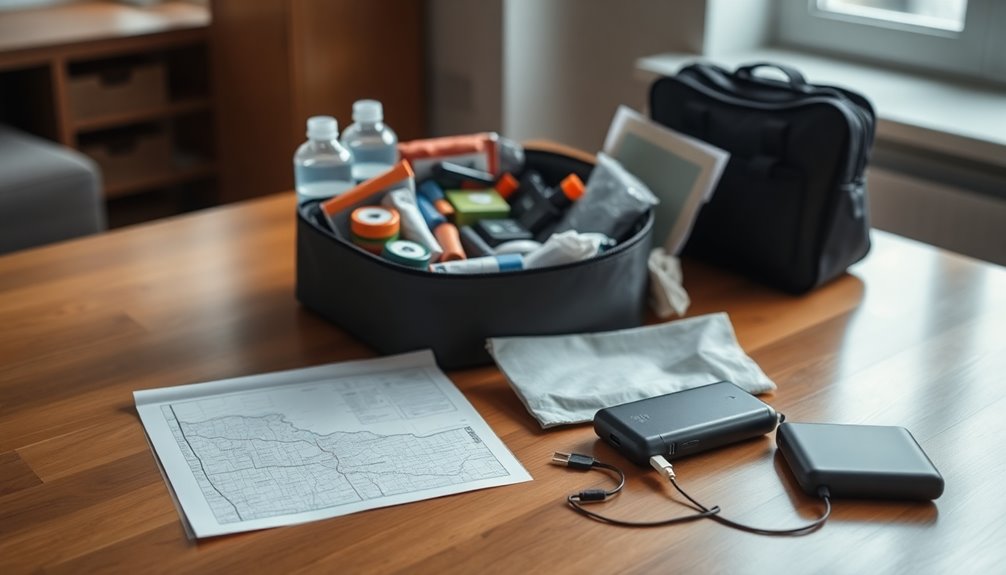
Crisis preparedness is all about taking proactive steps to identify potential emergencies and develop plans to reduce their impact. This means creating a comprehensive emergency plan tailored to your family's needs, assembling a survival kit, and staying informed about local disaster risks.
By doing so, you can significantly reduce fear and anxiety during emergencies because you'll be better equipped to handle unexpected situations. It's crucial to understand self-sufficiency, ensuring you can sustain yourself and your family for at least three days without external aid. Additionally, incorporating multi-functional gear into your survival kit can enhance your readiness for various scenarios.
Regular training and drills are also essential, allowing everyone in your household to familiarize themselves with emergency procedures and the contents of your preparedness kits. Being prepared makes all the difference when a crisis strikes.
Essential for Long-Term Sustainability
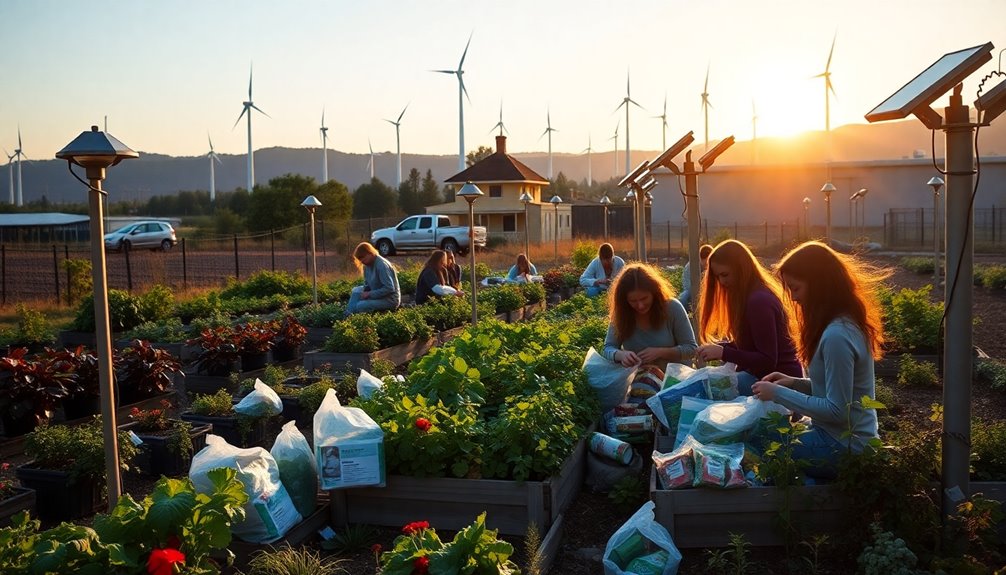
To ensure your emergency preparedness is sustainable, you need life-saving strategies that keep your supplies fresh and relevant.
Regularly updating your 72-Hour Kit and being aware of local hazards will prepare you for any situation.
Life-Saving Preparedness Strategies
A solid emergency preparedness plan can make all the difference when disaster strikes. Start by developing a comprehensive plan that includes communication strategies, evacuation routes, and designated meeting points to enhance your family's safety.
Assemble a 72-Hour Kit with essentials like food, water, first aid items, and tools, ensuring you can sustain yourself for at least three days. Don't forget to regularly maintain and update your emergency kit, rotating food and water supplies every six months to keep everything viable.
Tailor your preparedness strategies based on the specific disasters likely in your area—create firebreaks for wildfires or secure heavy furniture for earthquakes. Additionally, consider integrating energy-efficient models into your home to prepare for potential power outages during emergencies.
Lastly, engage in community initiatives to foster a supportive environment during emergencies.
Local Hazard Awareness
Understanding the specific hazards that affect your community is crucial for effective emergency preparedness. By knowing whether you're at risk for earthquakes, floods, or hurricanes, you can tailor your emergency plans to address those specific risks.
FEMA emphasizes that being familiar with local disaster threats boosts community resilience and enhances your self-sufficiency during emergencies. Research shows that residents informed about their local hazards often prepare better, leading to fewer disruptions and reduced property damage.
Engaging with local emergency management offices gives you valuable insights into past disasters and their impacts on your area. Prioritizing hazard awareness not only helps you but also strengthens your entire community's ability to respond effectively when crises occur.
Take action and stay informed!
Emergency Plan Communication Strategies
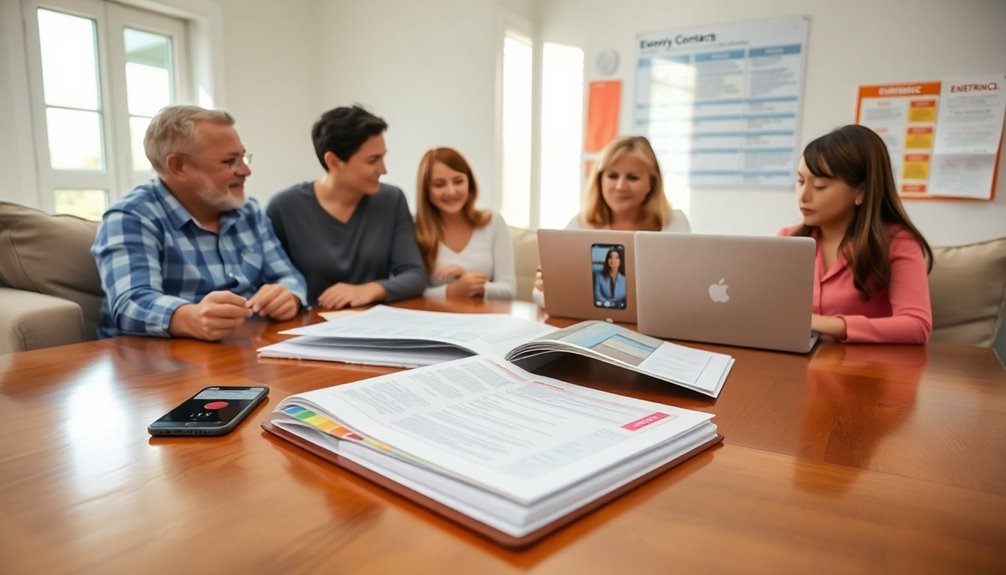
Establishing effective communication strategies is crucial when creating an emergency plan for your family.
Start by setting up a clear communication plan that designates a meeting place and outlines contact methods. Make sure everyone knows how to reach each other during a crisis.
Use group messaging apps or social media to quickly share updates with family and friends. Designate an out-of-town contact person who can relay messages if local networks are down.
Regularly practice drills that include these communication strategies, ensuring everyone's familiar with the plan.
Lastly, ensure all family members have access to emergency contact information stored in multiple locations, such as mobile devices and printed copies in your emergency kits. Additionally, consider how secure payment processing can support your family's financial needs during unexpected emergencies.
Emergency Planning Checklists
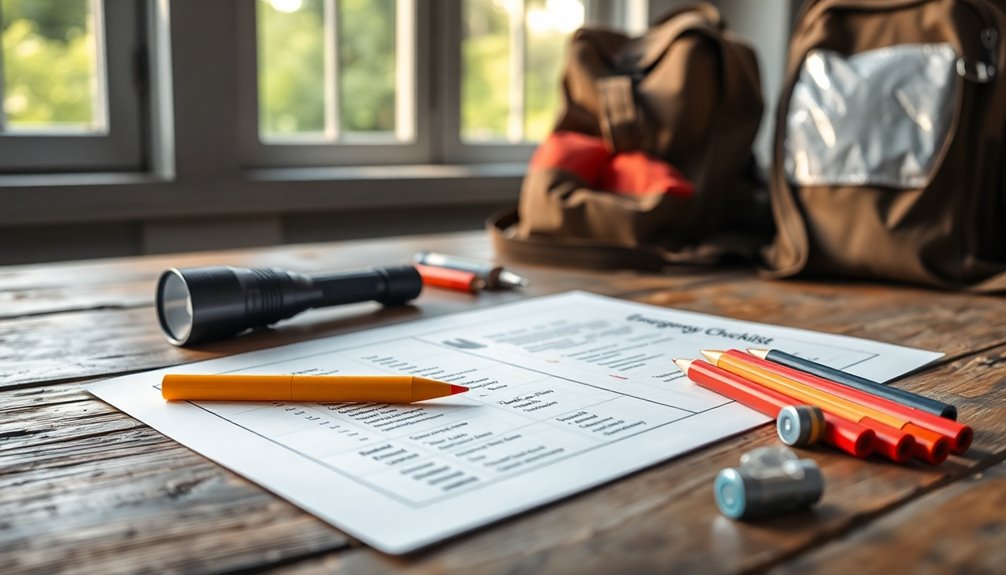
An effective emergency planning checklist is your roadmap to safety when a crisis strikes. Start by including a family disaster plan, a three-day supply of non-perishable food and water, and a well-stocked first aid kit.
Detail specific evacuation routes and meeting places, ensuring everyone in your household knows these plans in case you become separated. Regularly review and update your checklist to reflect any changes in your family's needs or local risks.
Don't forget to incorporate special considerations for vulnerable groups, like children, older adults, and pets, addressing their unique needs during an emergency.
For additional guidance, utilize resources such as the American Red Cross's Emergency Resource Library to access tailored checklists and guidelines.
Effective Resource Allocation
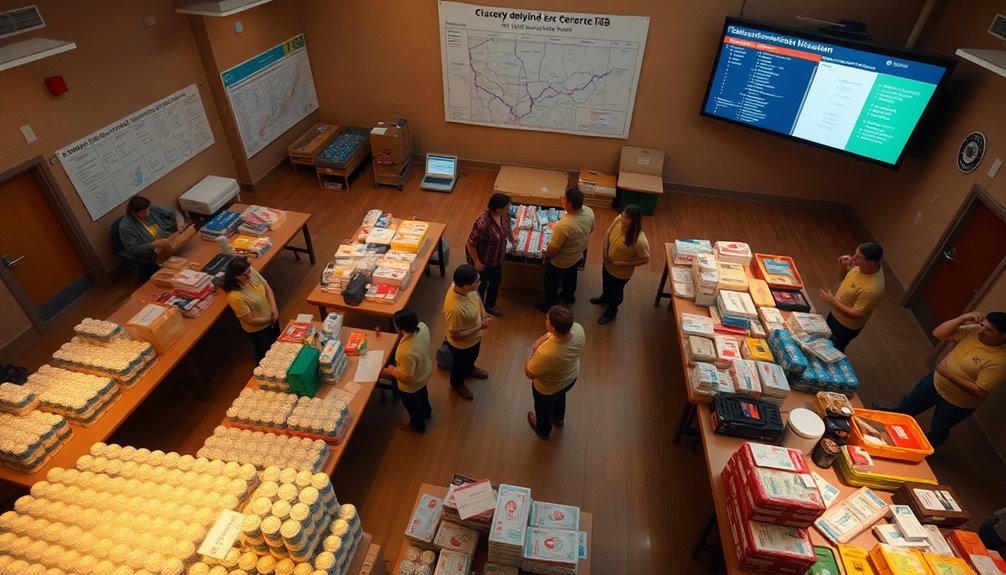
Effective resource allocation is crucial for successful emergency preparedness. You need to ensure that essential supplies like food, water, and first aid kits are easily accessible and meet the needs of everyone in your household, especially vulnerable members.
Start by assessing local risks and focus on high-risk areas to enhance resilience against specific disasters, such as floods or wildfires. Regularly maintain and update your emergency kits, replacing expired food and medications at least every six months.
Utilize tools like the American Red Cross Ready Rating™ program to evaluate your preparedness and allocate resources effectively. Collaborating with local emergency management agencies can also improve resource sharing and strategies for effective disaster response and recovery. Additionally, consider incorporating safety tools such as first aid kits and water filters to ensure that your family is properly equipped to handle any emergency situation.
Overcoming Resource Limitations
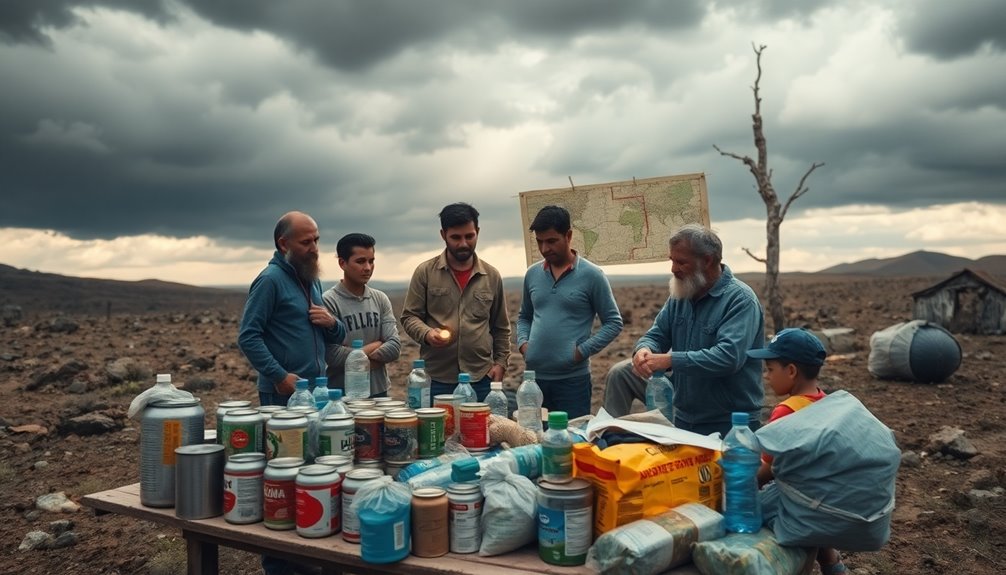
When you're facing resource limitations, community training programs can be a game changer. Engaging with your neighbors not only helps pool resources but also fosters a support network that enhances everyone's preparedness. Additionally, participating in community activities can improve social skills, which are essential for effective collaboration during emergencies.
Community Training Programs
Community training programs play a vital role in equipping individuals with the skills needed to navigate emergencies, especially in areas where resources are limited.
By participating in programs offered by organizations like the American Red Cross, you gain essential knowledge in first aid, CPR, and emergency response. These skills empower you to assist yourself and others during crises.
Many communities provide free or low-cost training sessions, making it easier for everyone to access vital preparation resources. Furthermore, local organizations can collaborate to enhance these programs, pooling resources for broader outreach.
Engaging with your community in preparedness initiatives fosters a culture of safety, encouraging you and your neighbors to take proactive steps in the face of potential disasters.
Community Engagement Techniques
To overcome resource limitations in emergency preparedness, engaging local organizations can really make a difference. By forming partnerships, you can tap into additional resources and expertise, making your initiatives more effective.
Hosting community workshops allows knowledge sharing and skill-building, empowering residents to take proactive steps towards disaster readiness. Don't underestimate the power of social media; use it to spread the word about preparedness events and resources, boosting community participation.
Implementing a volunteer program can also harness local talent, addressing resource gaps through collaboration. Finally, engage schools and youth organizations to promote preparedness education among children, fostering a culture of readiness that extends to families and the wider community.
Together, these techniques can significantly enhance your emergency preparedness efforts.
Survivor Stories From Disasters
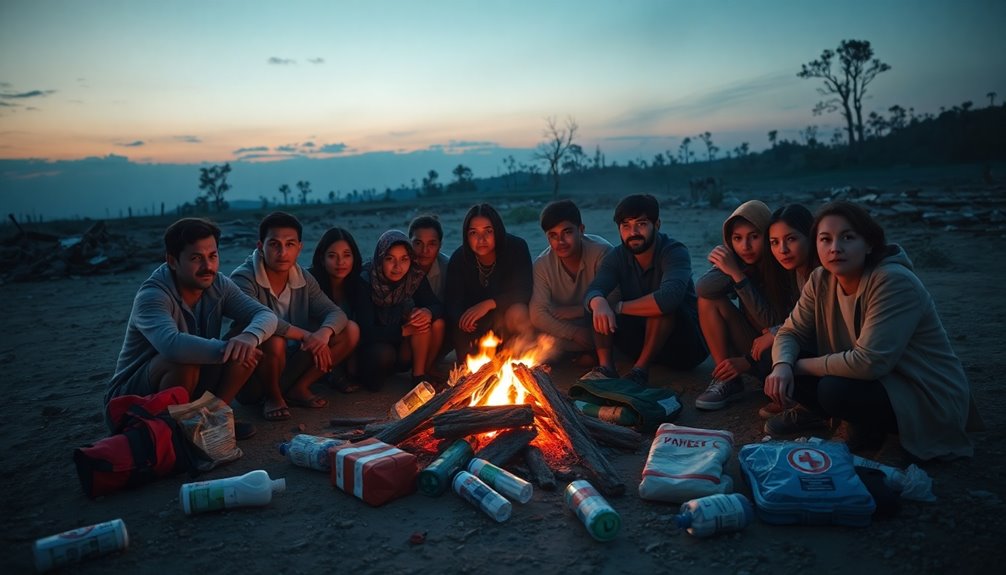
Survivor stories from disasters reveal how preparation can make a life-or-death difference. Many survivors of hurricanes and wildfires stress the importance of having an emergency kit, which can greatly enhance your survival chances.
Those with a family disaster plan often report feeling more secure and capable during crises. After major earthquakes, survivors recount how knowing local evacuation routes allowed them to navigate dangerous situations effectively.
Personal accounts from flood victims highlight that staying informed about local risks and weather conditions leads to timely evacuations that save lives.
Lastly, survivors emphasize the emotional resilience gained from community preparedness initiatives, showcasing how neighbors supporting each other can significantly aid in recovery efforts.
Moreover, ensuring access to energy-efficient heating and cooling can provide comfort and safety during extreme weather events, making your emergency plan even more robust.
Your preparedness can be the key to survival.
Conclusion
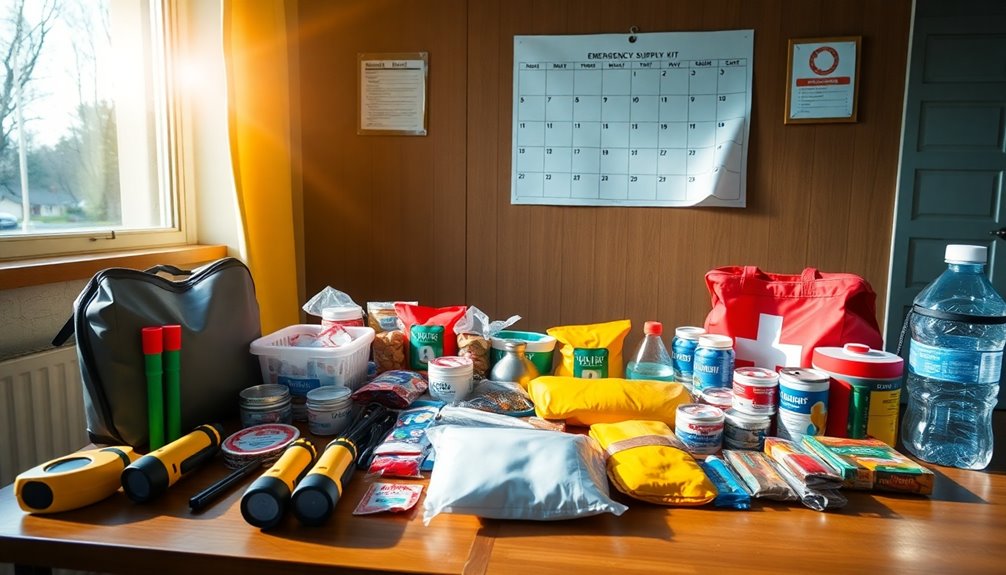
Preparedness isn't just a precaution; it's a lifeline. When you take the time to prepare for emergencies, you significantly reduce fear and anxiety, allowing you to act decisively during crises.
Familiarizing yourself with local disaster risks and tailoring your emergency plans enhances their effectiveness.
Assembling a comprehensive 72-Hour Kit with essential supplies ensures you can remain self-sufficient for at least three days without external help.
Remember, regular maintenance and updates of your emergency kits are crucial to keep supplies effective and aligned with your evolving needs.
Lastly, engaging in community preparedness initiatives fosters resilience, encouraging collective action that strengthens your community's ability to handle emergencies.
Being prepared means you're ready to face whatever comes your way.
Additional Resources
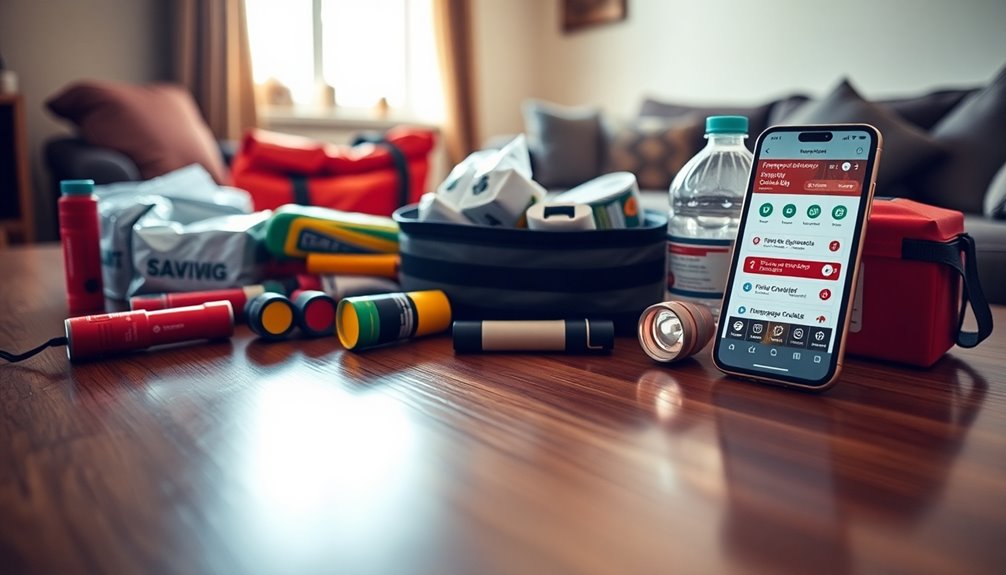
When it comes to emergency preparedness, having the right resources at your fingertips can make all the difference. The FEMA website offers a wealth of information, including checklists and planning guides tailored to various emergencies.
The American Red Cross provides free educational materials like their Emergency app, available in both English and Spanish, to keep you informed about local situations.
Don't overlook local government websites; they often have community-specific risk assessments and emergency response plans. Online forums and social media groups can help you connect with others, sharing strategies and experiences.
Lastly, consider attending workshops and training sessions offered by organizations like the Red Cross to gain hands-on skills for effective crisis management.
Stay prepared!
Frequently Asked Questions
What Are the 5 Steps of Emergency Preparedness?
The five steps of emergency preparedness start with getting a kit, which means gathering essential supplies for at least three days.
Next, you'll want to make a plan, outlining how your family will communicate and evacuate.
Then, be informed about local risks and alerts.
Practice disaster drills to ensure everyone knows their roles, and finally, engage with your community to enhance resilience and support others in their preparedness efforts.
What Do You Need to Be Ready for Emergency Situations?
To be ready for emergency situations, you need a well-stocked 72-hour kit.
Start with a three-day supply of non-perishable food and at least one gallon of water per person per day.
Don't forget first aid supplies, appropriate clothing, and sanitation items like moist towelettes.
Equip your kit with tools like a multi-tool, flashlight, and portable charger.
Regularly check and update your supplies to ensure everything's fresh and suitable for your family's needs.
What Are the 5 Areas of Crisis Preparedness?
To be fully prepared for a crisis, focus on five key areas.
First, assess your own readiness and gather necessary supplies through self-preparation.
Next, create a 72-Hour Kit stocked with essential items like food and water.
Understand your local risks to tailor your strategies effectively.
Engage in community involvement to strengthen preparedness initiatives.
Lastly, consider special needs for vulnerable populations, ensuring everyone's safety and access to resources during emergencies.
What Are the 8 Tips for Emergency Preparedness?
To be prepared for emergencies, start by knowing the common disasters in your area.
Create a tailored emergency plan with evacuation routes and communication strategies.
Assemble a 72-Hour Kit with food, water, and first aid supplies.
Regularly check and maintain this kit, rotating items every six months.
Educate your family through disaster drills and stay informed using resources like the American Red Cross app.
Participate in community preparedness initiatives to enhance your readiness.

